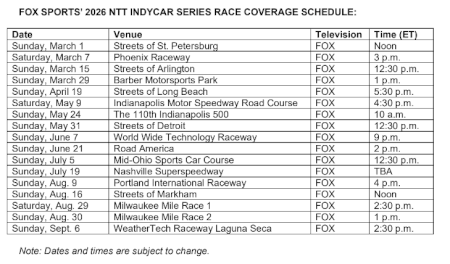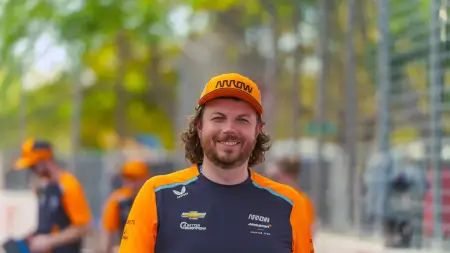February 28th 2023
IndyCar to alter handling of clock and red flags in qualifying
With a packed entry list of at least 27 cars for each of its 17 races, the NTT IndyCar Series will try to give its drivers more time to complete the multi-round knockout road and street course qualifying sessions. But the new approach to managing the clock for each round comes with an interesting caveat.
IndyCar’s practice of giving drivers 10 minutes for the first two segments remains unchanged, but rather than continue the practice of having the race director start the 10-minute countdown clock from race control while cars sit on pit lane, the series will have the clock start once the first driver in each session takes to the track and comes around and crosses the alternate start/finish line.
The result would give teams more time to ‘gap’ themselves before their qualification runs begin. There is also a benefit for teams who have pits towards the back of pit road – giving them more time to get onto the race track to begin their timed laps.
The result would give teams more time to ‘gap’ themselves before their qualification runs begin. There is also a benefit for teams who have pits towards the back of pit road – giving them more time to get onto the race track to begin their timed laps.
Additionally, it’s likely more teams will send their drivers out early in each round to complete their first runs on Firestone’s primary tires while leaving more time to complete their second runs on the stickier Firestone alternate tires which produce the fastest lap times.
Depending on the length of the lap, the change should add somewhere between 60 to 90 seconds of time to each round for drivers to use. Race control will alert its teams as to when each round has started, even though the official 10-minute clock will sit idle until the first car crosses the alternate start/finish line.
But as fans have often observed, many teams are in the habit of holding their drivers for three or four of those first 10 minutes as they sit and wait to see if rookies and slower drivers will head out and become the first to put down new rubber on the circuit.
Assuming teams are proactive and send their drivers out when each round begins, IndyCar will employ its new clock-starting procedure when the electronic timing loop is triggered at the alternate start/finish line. And if teams opt to hold their drivers, “We’ll start it for them in a time determined at each venue,” IndyCar president Jay Frye told RACER.
“With a growing field, these changes will allow teams a better opportunity to create spacing during their qualifying runs while not penalizing teams who have pits towards the back,” Frye added. “We worked with teams and drivers on this change and we believe this will prove beneficial for everyone.”
Asked if there was a set amount of time IndyCar will wait before starting the clock, Frye said it will change from track to track since track lengths and the time to complete a lap varies. Although there’s no specific period of time that IndyCar will wait – if necessary – before starting the clock, look for the series to have limited patience on the subject.
On a related topic, IndyCar has adjusted its rules for managing red flags during road and street course qualifying. New for 2023, the series will stop the clock during the first red flag in each knockout round, but it won’t be stopped if again if more red flags are required during that session. Previously, the clock would only stop during the final round of qualifying, the Firestone Fast Six, which guarantees a six-minute session.
Although the occurrence of multiple red flags in a single round are rare, the shift to only halting the 10-minute countdown clock on the first red flag is yet another change being made in the name of urging teams to get out early and get their ‘banker’ laps on primaries and best laps on alternates done with ample time left on the clock.
For more information: www.racer.com














